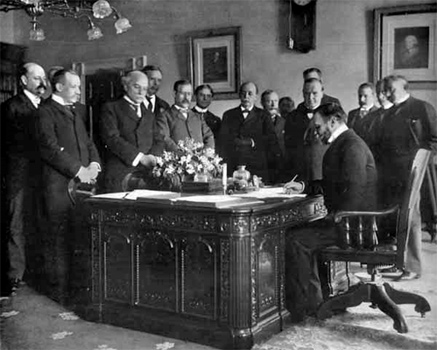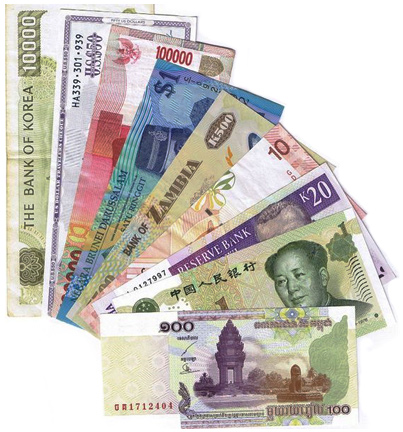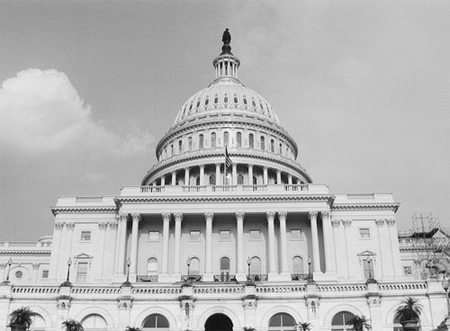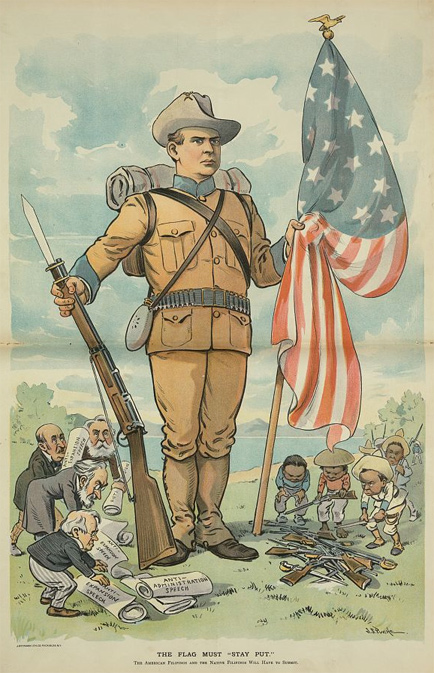
Source: Hay signs Treaty of Paris, Library of Congress
By the war's end, the United States emerged as an imperialist nation. However, there were many who believed that America should not pursue this course. In this section, you will learn about the debate that ensued over the annexation of the Philippines. Read the following information and complete the chart outlining the arguments.

Source: Hay signs Treaty of Paris, Library of Congress
In this photo, John Hay, U.S. Secretary of State who helped negotiate the Treaty of Paris in December 1898, signs on behalf of The United States.
As American forces engaged the rebel forces in the Philippines, the Treaty of Paris brought the Spanish American war to an official end. As part of its terms, the United States agreed to grant Cuba its independence, retain control of the islands of Puerto Rico and Guam, and pay Spain $20 million dollars for the Philippines. The United States now had a sphere of influence in Asia and Latin America. The sphere of influence was important for military strength, as well as trade.

Source: Money around the world, Wikitravel
New trading markets were emerging in the Far East. The Philippines would provide a trading hub for the United States to gain greater access to a variety of resources and as a market to sell American made goods.
![]() Click on the star to see the sphere of influence that the United States now held in Asia.
Click on the star to see the sphere of influence that the United States now held in Asia.
Source of map: Southeast Asia, Central Intelligence Agency
![]() Click on the star to see the sphere of influence that the United States held in Latin America.
Click on the star to see the sphere of influence that the United States held in Latin America.
Source of map: Central America and the Caribbean, Central Intelligence Agency
![]() Click on the red stars on the world map to see the sphere of influence that the United States had all over the world.
Click on the red stars on the world map to see the sphere of influence that the United States had all over the world.
Source of map: Physical map of the World, January 2011, Central Intelligence Agency
Activity: How did the United States' gaining these spheres of influence impact the trading markets for the United States? Did the trading markets expand or decrease? Explain your answer in your notes.

Source: U.S. Capitol Building, unknown, Flickr
The Treaty of Paris still faced the scrutiny of the United States Senate. Officially ending the Spanish American War could be achieved, but ratifying the treaty with the provision that the Philippines would now belong to the United States complicated the matter. Politicians in Washington were divided on the issue, and they too were being pressured by unions, religious groups and various other organizations that sprang up during the debate.

Source: The flag must stay put, Pughe, J.S., Library of Congress
This cartoon is called "The Flag Must Stay Put." Which side do you think the cartoonist supported: Expansionism or Anti-Expansionism?
Interactive popup. Assistance may be required. This illustration is called "The flag must "stay put". It shows George F. Hoar, Carl Schurz, David B. Hill, and former Massachusetts Governor George S. Boutwell, anti-expansionists, placing their "Anti-Expansion Speech" at the feet of a huge American soldier holding a rifle and the American flag, while opposite them Filipinos place guns and swords at the soldier's feet. This cartoonist supported expansionism.